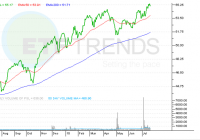‘Insurance’ For A Declining Market?
It isn’t only US insurers that are in a sweet spot right now. These three European insurers / financial services providers are worth a look, too! They are big and liquid, making your due diligence easier. If world markets take it on the chin in the coming weeks I would consider it an intermediate-term buying opportunity – for some sectors. If Europe, in particular, is hit hard enough to provide great opportunities, we’ll be at least selective buyers. If we can buy cheaply enough, I’m OK holding even if we didn’t get the lows. We buy in a range of value ; we aren’t trying to get the exact low! One possibility many are considering is the Global X FTSE Greece ETF (NYSEARCA: GREK ). Let them. Me? I won’t touch it. Yes, it closed cheap on Thursday and is likely to open even cheaper on Monday. And it sells at a 3% discount to its NAV. But it’s the composition of the fund that makes it uninteresting to me. Rather than being comprised of Greek consumer staples, infrastructure, shipping, food companies etc., firms that are needed by the Greek people whether they are in the EZ or not, 22% of the ETF is in one stock: Coca-Cola HBC ( OTCPK:CCHGY ) – which is a Swiss company now, no longer Greek. I can buy 22% of GREK just by buying one Swiss stock. Another 25% is in Greek banks, which may or may not remain solvent, and nearly 10% more is in a lottery and sports betting firm in Greece. Maybe if it goes to a deeper discount and the banks look like they’ll make it… Otherwise, no way. Ironically, the Greek fiasco will most likely weaken the euro yet again. A weaker Euro means European companies like Daimler ( OTCPK:DDAIF ), VW ( OTCQX:VLKAY ), Unilever (NYSE: UL ), Roche ( OTCQX:RHHBY ), Coca Cola HBC, and others that exports to other nations, will be selling at a favorable exchange rate and are likely to, at least temporarily, be able to under-cut their competition in the US, Asia and elsewhere. Which means opportunity. We already own 1000 shares of Allianz SE ( OTCQX:AZSEY ), the giant Germany-based insurance and financial services giant that is, among other things, the parent of PIMCO, which all by itself has $1.6 trillion in assets under management. Two of Allianz’s competitors look good to me today, as well. France’s AXA SA ( OTCQX:AXAHY ) was founded in 1852 and Switzerland’s Zurich Insurance ( OTCQX:ZURVY ) in 1872. They’ve both seen far bigger calamities than the current one and survived, including bank panics, the Great Depression and two world wars. This? Poof! This is nothing! Both are global insurance companies that offer just about every kind of insurance imaginable. They also offer investment advice, mutual funds and other products to extend their reach in the financial services arena. They are depressed right now because they have had exposure to Greek headlines, eurozone turmoil, Italian bonds, etc. But both have credibly marked their portfolios to market and both are writing huge amounts of business well beyond Europe. AXA is the parent, for instance, of both Equitably Life and MONY here in the US. It trades at a PE of 11, a Price/Sales ratio of 0.50, a Price/Book of 0.80, and pays a yield of 4.26%. Zurich has a typically bulletproof Swiss balance sheet, has hedged a large part of its equity exposure, and is actively delivering products and services in more than 170 countries. The stock has a 12 P/E, a Price/Sales of 0.6, a Price/Book of 1.3, and yields just over 6%. Please note that, in the European tradition, both firms pay their dividend just once per year! Editor’s Note: This article discusses one or more securities that do not trade on a major U.S. exchange. Please be aware of the risks associated with these stocks. Disclosure: I am/we are long AZSEY, ZURVY. (More…) I wrote this article myself, and it expresses my own opinions. I am not receiving compensation for it. I have no business relationship with any company whose stock is mentioned in this article.
